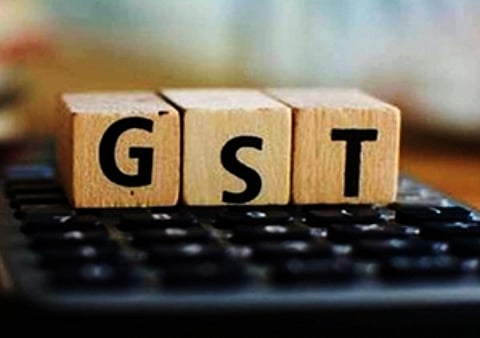India's GST reforms can counter growth hit from US's 50% tariffs
UAE and Gulf NRIs buying homes in India to benefit from GST changes

Dubai: India’s move to slash the GST (Goods & Service Tax) rates could be one of the best defenses against the 50% import tariffs the US has imposed against the country.
Reducing the GST load will free up more funds for Indian businesses and could also potentially lead to higher spending by consumers. What the Indian government hopes to achieve is offset the drop in GDP growth brought on by US tariffs through higher domestic spending.
For Indian expats in the UAE and other Gulf states, the move could also help those who are considering buying property in India.
“India’s GST changes are aimed at simplifying the tax rates structure, which was overdue,” said Pankaj S. Jain, Managing Director at Dubai-based AskPankaj Tax Advisors. “By reducing the standard GST rate, the objective is to increase consumer spending which will be a positive push to the economy.
“On US tariff, one has to wait and watch. Without the certainty of how long the higher tariffs would last, the business decisions need more clarity.”
The Indian stock markets re-opened weaker, with the Sensex down over 600 points to 80,272 and the Nifty lower by 146 points to 24,565 by 8:20am UAE time. The Indian rupee is steady at 23.87 to the dirham, but will remain under pressure. (The Indian markets were closed Wednesday (August 27) because of ‘Ganesh Chaturthi’.)
The decline in Indian stocks was anticipated, and this is exactly where the GST revisions can help once they are announced early September.
“Indian stock markets are anticipated to react positively to the GST reforms,” said Milan Vaishnav, founder of ChartWizard.ae.
“Lower taxes and potential price reductions could drive consumption and revenue for companies. The FMCG, consumer durables, automobiles, cement, construction, and insurance sectors will benefit from lower rates - thus driving price reductions and higher demand.”
What could the new GST rates be?
The new rates are likely to come into effect by Diwali this year.
The proposed overhaul will simplify the current four-slab structure - 5%, 12%, 18%, and 28% - into possibly two rates
* 5% for essentials and daily-use goods (merit rate); and
* 18% for most other goods and services (standard rate).
* There could be a new rate of 40% for select luxury goods, including alcohol, tobacco, fast foods, and luxury vehicles.
“This simplification aims to reduce the tax burden for consumers and businesses, especially by moving nearly 99% of goods currently taxed at 12% to the lower 5% slab,” said Vaishnav. “And shifting about 90% of goods from the 28% slab to the 18% rate.
“The reforms also target the correction of inverted duty structures, which have hampered competitiveness in industries like textiles, footwear, and packaged goods.”
It was on August 15 that Prime Minister Narendra Modi announced that changes are coming for GST slabs, which came into effect on July 1, 2017.
Boost for Indian property?
The expectations are that any changes to the current GST structure will be of help to India’s property market too. And one that will be closely watched by NRIs eyeing more investment possibilities in India.
“The GST reforms can deliver modest but meaningful reductions in housing prices,” said Dr. Prashant Thakur, Executive Director and Head - Research & Advisory at Anarock Group.
“For affordable housing, currently taxed at 1%, the GST reduction would be limited though lower input costs - especially if input tax credits (ITC) are restored. (This) can lower prices by up to 2%–4%.
“In the mid-segment, a GST reduction from 5% to 3% could cut prices by 2%–3%.
“In the luxury homes segment, we could at best expect nuanced changes because while input costs may reduce, the luxury items used in such projects may be subject to the highest 40% rate, thus reducing the potential for price reductions.”
Sign up for the Daily Briefing
Get the latest news and updates straight to your inbox





